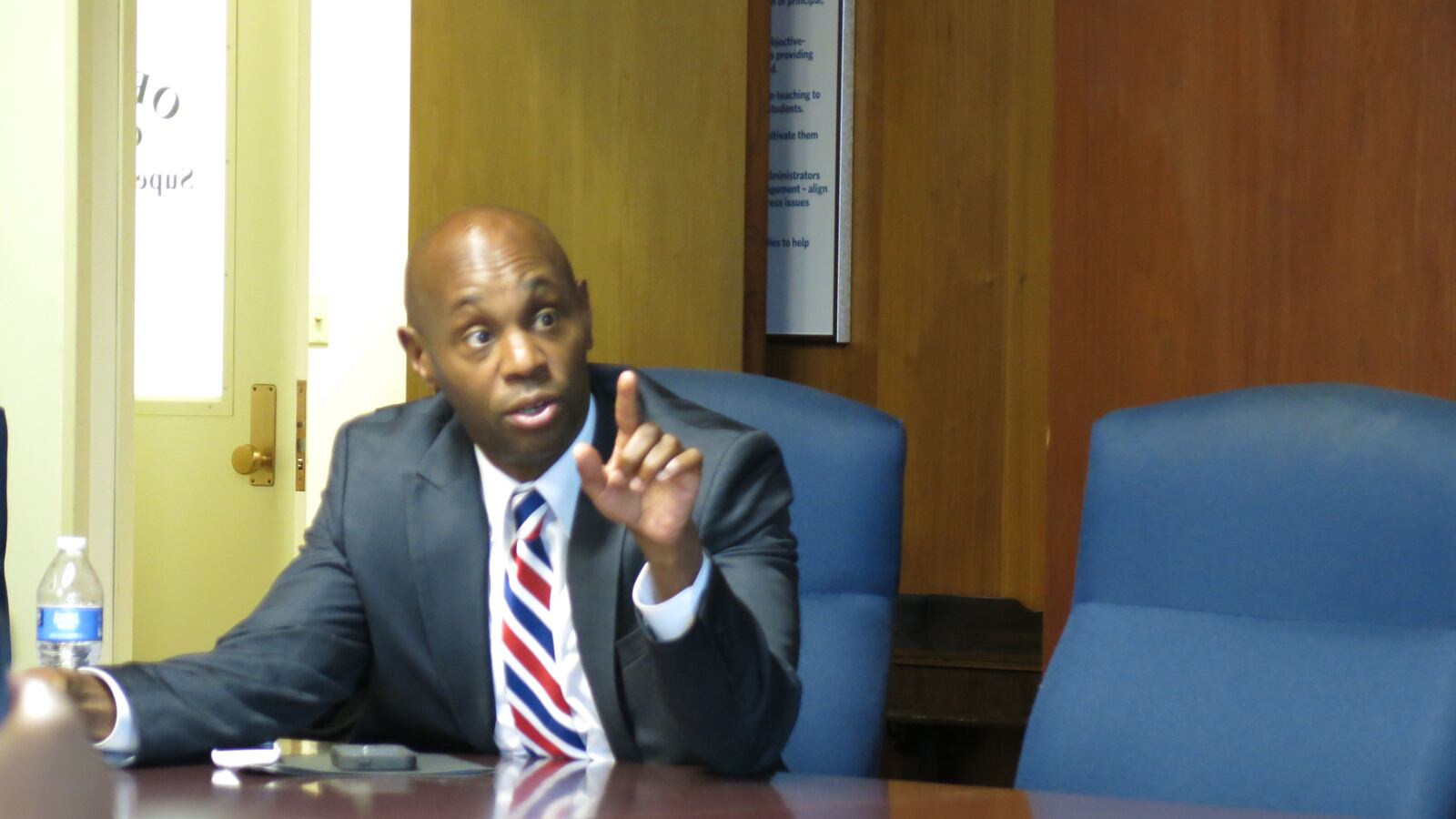After fielding criticism from hundreds of teachers, Shelby County Schools Superintendent Dorsey Hopson II amended one key piece of the county’s teacher evaluation policy, but held fast to another.
The change has to do with the portion of teachers’ evaluation scores that comes from classroom observations. In the previous version of this year’s evaluation, the district prohibited revisions to teachers’ observation scores after observers tabulated them. Now, the scores will only be final after teachers meet with their observers, giving teachers a chance to request changes.
“This ensures that the conferences can be a more collaborative exercise for teachers and leaders,” Hopson said in a letter sent to teachers Monday, announcing the new policy.
The change follows a meeting Hopson held last week in which teachers protested the lack of opportunity to ask for a revised observation score. One of those teachers, Margaret Box, a kindergarten teacher at Cordova Elementary, praised Hopson’s letter on Monday, calling it “a very thoughtful response.”
“Not finalizing the scores until the end of the post-conference allows for great dialogue,” said Box, who brought the issue to the board and served on the district’s committee to revise the observation process. “I really feel good about it and it’s a good start to our working relationship. I think teachers will feel more positive about the spirit of the observations.”
Yet in his letter, Hopson said he will maintain another element of this year’s evaluation policy that teachers protested at a board meeting last month. That component of the evaluation has to do with what observers need to see in classrooms in order to rate them the highest score, a level 5.
The revised observation rubric — known as TEM 4 — defines level 5 performance as showing evidence that teachers meet 69 teaching and learning objectives. Teachers have called the requirement virtually impossible, arguing that all objectives would never be visible in a single class period. Teachers are slated to receive bonuses based on their evaluations this year and pay raises could come soon after that.
In his email, Hopson said he is keeping the requirement to meet all 69 objectives because he wants the revised observation rubric to match high expectations for classroom instruction. The rubric is not meant to serve as a checklist, he said.
“The rubric is a guide for observers to provide feedback to teachers,” Hopson said. “Observers are reminded to give scores based on what is seen during an observation, not what isn’t seen. If evidence leads to an observer to a 5 rating, then the teacher is a 5. I realize that some of our observers are doing this, as we are already seeing teachers with Level 5 ratings.”
Shelby County teachers are observed in scheduled and unscheduled classroom visits and then graded on a 1 to 5 scale, with 4 and 5 representing the highest of achievement. A teacher who scores a level 3 is considered to be meeting expectations, while a teacher who scores a level 1 or 2 is judged in need of improvement.
“This adjustment is effective immediately, and staff will be reaching out directly to principals regarding teacher observation scores that have already been finalized,” Hopson said in the letter.
Contact Tajuana Cheshier at tcheshier@chalkbeat.org and (901) 730-4013.
Follow us on Twitter: @TajuanaCheshier, @chalkbeattn.
Like us on Facebook: https://www.facebook.com/chalkbeattn.
Sign up for our newsletter for regular updates on Tennessee education news: http://tn.chalkbeat.org/newsletter/
Here’s the full letter from Hopson:
Monday, September 22, 2014 Colleagues, In all of our roles, we are responsible in some way for supporting schools and, in turn, improving student achievement. This is why we show up to work each day and what should inspire each of us to do our best in our roles day in and day out. I know that in order to effectively support our schools, my staff and I must continually seek the input of those working closest to our students. As a direct result of my recent conversations with teachers, I have realized our teacher evaluation system needed both modification and clarification. First, based on feedback from teachers about the finalization of observations, we agreed that observations will now be finalized after post-conferences, instead of before. This ensures that the conferences can be a more collaborative exercise for teachers and leaders. This adjustment is effective immediately, and staff will be reaching out directly to principals regarding teacher observation scores that have already been finalized. Secondly, I want to clarify the spirit in which our teacher observation rubric was developed. While the rubric is complex and designed to match our high expectations for classroom instruction, it is not meant to serve as a checklist. The rubric is a guide for observers to provide feedback to teachers. Observers are reminded to give scores based on what is seen during an observation, not what isn’t seen. If all evidence leads an observer to a 5 rating, then the teacher is a 5. I realize that some of our observers are doing this, as we are already seeing teachers with Level 5 ratings. As we continue working on behalf of our schools, I encourage school staff to share honest and open feedback with colleagues at central office. We value your input and are committed to supporting your work. Sincerely, Dorsey Hopson II, Esq. Superintendent


